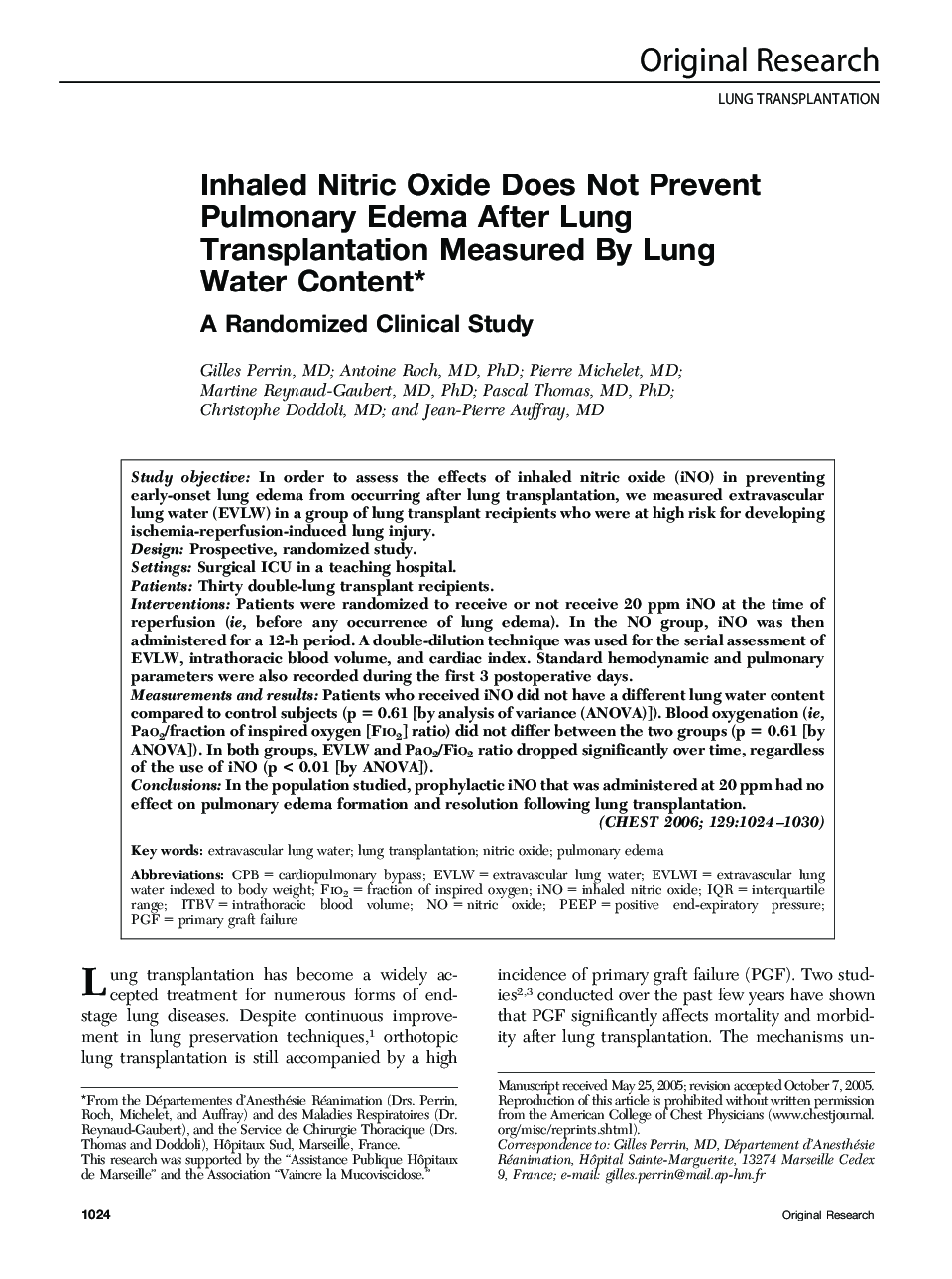| Article ID | Journal | Published Year | Pages | File Type |
|---|---|---|---|---|
| 2905601 | Chest | 2006 | 7 Pages |
Study objectiveIn order to assess the effects of inhaled nitric oxide (iNO) in preventing early-onset lung edema from occurring after lung transplantation, we measured extravascular lung water (EVLW) in a group of lung transplant recipients who were at high risk for developing ischemia-reperfusion-induced lung injury.DesignProspective, randomized study.SettingsSurgical ICU in a teaching hospital.PatientsThirty double-lung transplant recipients.InterventionsPatients were randomized to receive or not receive 20 ppm iNO at the time of reperfusion (ie, before any occurrence of lung edema). In the NO group, iNO was then administered for a 12-h period. A double-dilution technique was used for the serial assessment of EVLW, intrathoracic blood volume, and cardiac index. Standard hemodynamic and pulmonary parameters were also recorded during the first 3 postoperative days.Measurements and resultsPatients who received iNO did not have a different lung water content compared to control subjects (p = 0.61 [by analysis of variance (ANOVA)]). Blood oxygenation (ie, Pao2/fraction of inspired oxygen [Fio2] ratio) did not differ between the two groups (p = 0.61 [by ANOVA]). In both groups, EVLW and Pao2/Fio2 ratio dropped significantly over time, regardless of the use of iNO (p < 0.01 [by ANOVA]).ConclusionsIn the population studied, prophylactic iNO that was administered at 20 ppm had no effect on pulmonary edema formation and resolution following lung transplantation.
